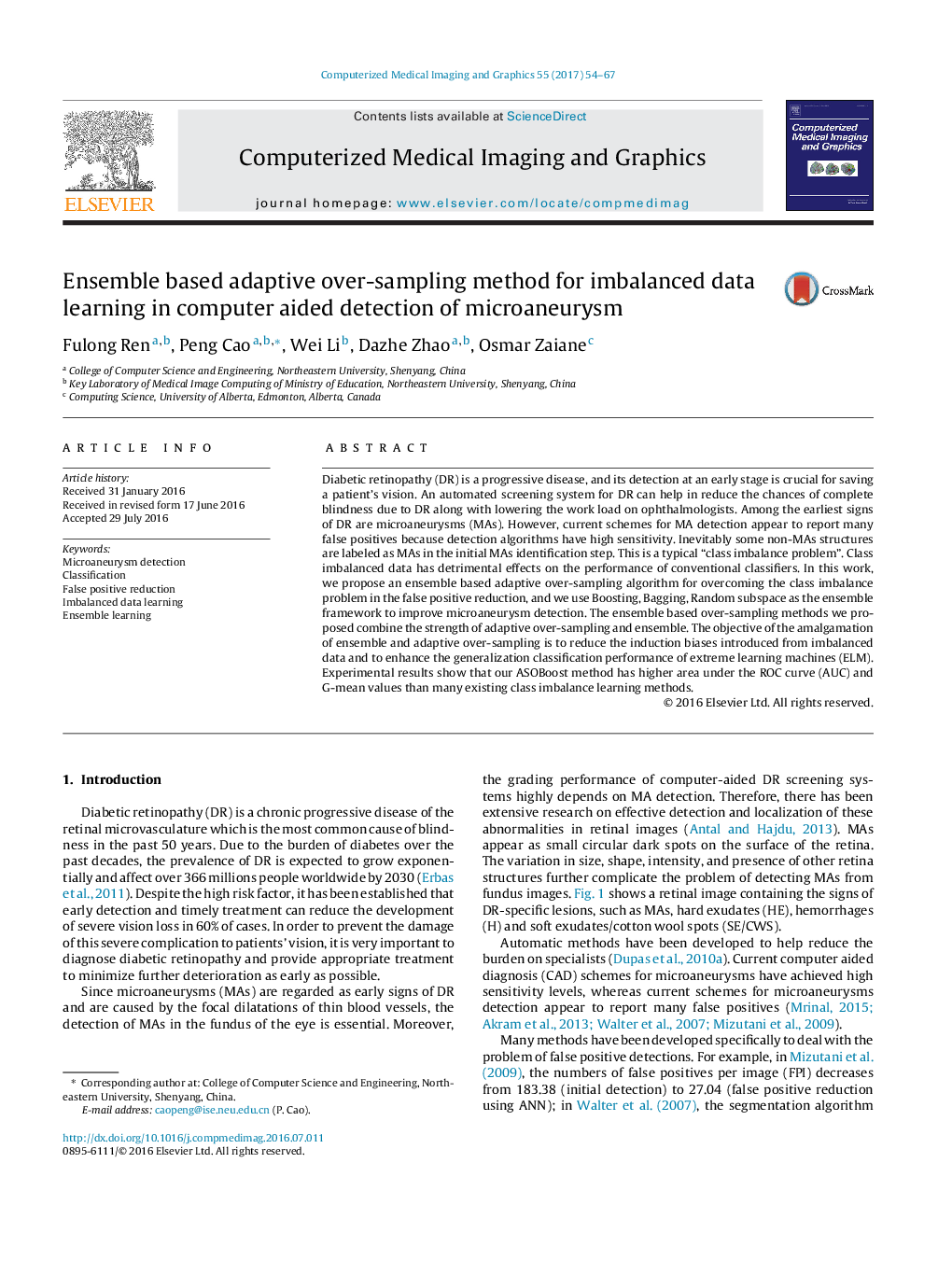| Article ID | Journal | Published Year | Pages | File Type |
|---|---|---|---|---|
| 4964721 | Computerized Medical Imaging and Graphics | 2017 | 14 Pages |
â¢Propose an adaptive over-sampling for imbalanced data learning in the false positive reduction of MAs.â¢Propose different ensemble classifiers incorporated with the adaptive over-sampling algorithm.â¢Comprehensive experiments have been conducted to demonstrate the effect of the ensemble based over-sampling.â¢Implement a complete automated systems for the detection of MAs.
Diabetic retinopathy (DR) is a progressive disease, and its detection at an early stage is crucial for saving a patient's vision. An automated screening system for DR can help in reduce the chances of complete blindness due to DR along with lowering the work load on ophthalmologists. Among the earliest signs of DR are microaneurysms (MAs). However, current schemes for MA detection appear to report many false positives because detection algorithms have high sensitivity. Inevitably some non-MAs structures are labeled as MAs in the initial MAs identification step. This is a typical “class imbalance problem”. Class imbalanced data has detrimental effects on the performance of conventional classifiers. In this work, we propose an ensemble based adaptive over-sampling algorithm for overcoming the class imbalance problem in the false positive reduction, and we use Boosting, Bagging, Random subspace as the ensemble framework to improve microaneurysm detection. The ensemble based over-sampling methods we proposed combine the strength of adaptive over-sampling and ensemble. The objective of the amalgamation of ensemble and adaptive over-sampling is to reduce the induction biases introduced from imbalanced data and to enhance the generalization classification performance of extreme learning machines (ELM). Experimental results show that our ASOBoost method has higher area under the ROC curve (AUC) and G-mean values than many existing class imbalance learning methods.
